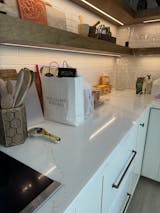Table of Contents
Introduction
In the modern era of smart home automation, lighting has emerged as a crucial element of convenience, energy efficiency, and ambiance control. Scheduling LED strips to follow daily routines offers an unparalleled opportunity to streamline your lighting experience, automate tasks, and enhance your productivity. This comprehensive guide will empower electricians, LED installers and integrators, custom fabricators, trade shows and events organizers, contractors, cabinet makers, and business owners with the knowledge and techniques to harness the power of programmable LED strips.
Benefits of Automated Lighting
- Convenience and Time Saving: Automated lighting eliminates the hassle of manually adjusting lights, freeing up your time for more important tasks.
- Energy Efficiency: Setting specific lighting schedules ensures that lights are only turned on when necessary, reducing energy consumption and utility bills.
- Improved Sleep Quality: Dimming lights gradually before bedtime promotes a more restful sleep environment.
- Increased Security: Automated lighting can simulate occupancy while you're away, deterring potential intruders.
- Enhanced Ambiance: Schedule ambient lighting to create a specific mood or atmosphere throughout the day.
Step-by-Step Guide to Programming LED Strips
- Choose the Right Controller: Select a controller compatible with your LED strips and lighting protocol (e.g., Zigbee, Wi-Fi, Bluetooth).
- Connect the Components: Wire the LED strips, power supply, and controller according to the manufacturer's instructions.
- Download the App: Install the companion app on your smartphone or tablet for remote control and scheduling.
- Set Up Your Schedule: Create multiple schedules based on your daily routine, specifying the time, brightness, and color temperature for each segment.
- Customize Scenes: Create custom scenes to evoke specific moods or atmospheres, with the ability to adjust multiple light parameters simultaneously.
- Monitor and Control Remotely: The app allows you to monitor and adjust your lighting remotely, even when you're away from home.
Advanced Features and Considerations

Applications
Morning Wake-Up Routine: LED strips can gradually brighten to simulate a sunrise, making waking up more natural and energizing.
Evening Wind-Down: Automate the dimming of lights in bedrooms and living spaces to create a relaxing environment before bed.
Cooking and Dining: Set under-cabinet lighting in the kitchen to activate during meal prep times, ensuring optimal visibility and ambiance.
Outdoor Lighting for Security: Schedule outdoor LED strips to light up at dusk and turn off at dawn to ensure safety and conserve energy.
Home Theater Mode: Automate LED strips to dim or switch to soft colors when a movie starts, enhancing the cinematic experience.
Retail Stores: Use automation to adjust lighting based on store hours, ensuring bright, welcoming lights during operating hours and dimmed lighting after closing.
Restaurants: Program LED strips to create different ambiances throughout the day—for instance, brighter lighting during lunch hours and a cozy, warm glow for evening dining.
Offices: Automate circadian lighting in workspaces to boost productivity by syncing brightness and color temperature with natural daylight cycles.
Trade Shows: Use pre-set lighting schedules to create dynamic displays that highlight specific areas or exhibits at different times.
Timed Presentations: Sync LED strips with presentations or performances, changing colors or intensity to enhance the atmosphere.
When the Sun Sets: Automate indoor lighting to switch on as natural light fades, maintaining a comfortable brightness level without manual adjustments.
While on Vacation: Simulate occupancy by scheduling lights to turn on and off randomly, deterring potential intruders.
During Relaxation Times: Program LED strips in living rooms or bathrooms to emit calming colors (like soft blue or warm amber) during designated relaxation hours.
Workout Sessions: Sync dynamic, energizing colors with a morning workout routine to boost motivation.
Architectural Features: Automate lighting for built-in features like crown molding, cabinets, or display shelves to highlight them during key hours.
Luxury Homes: Integrate automated lighting into smart home systems to elevate the homeowner’s experience with seamless lighting transitions.
 Skip to content
Skip to content


